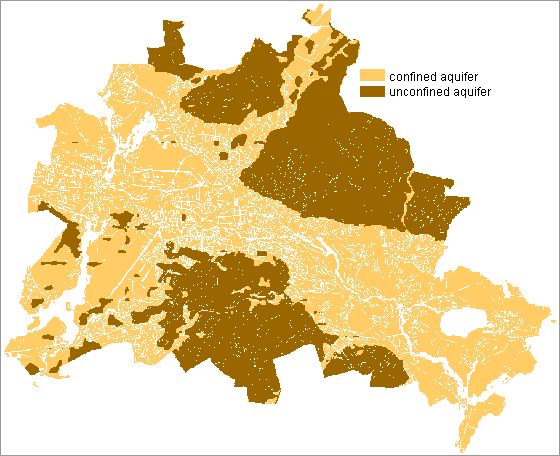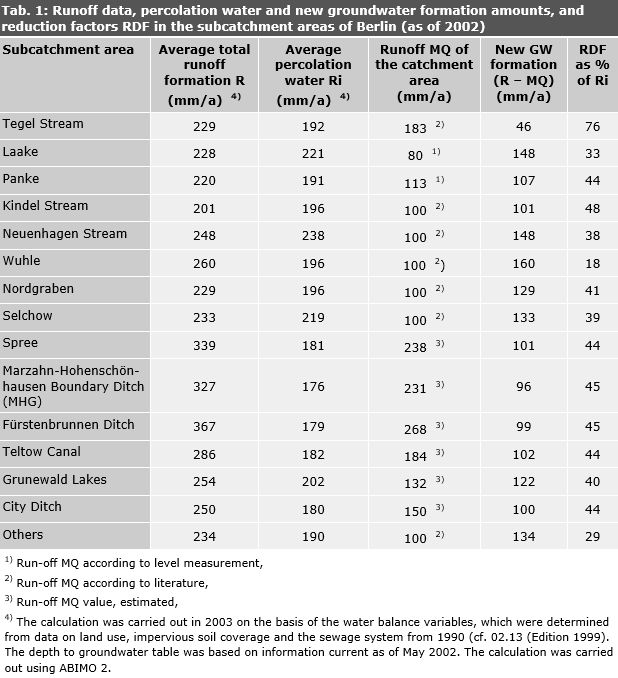The amount of new groundwater formation was calculated from the percolation rates using the method suggested by Glugla (Glugla and Fürtig, 1997, Glugla and Müller, 1997, Glugla and Eyrich, 1993, Glugla and König, 1989, Glugla et al., 1999).
According to Glugla (see above), for unconfined aquifers, such as the glacial spillways and outwash plains of northern Germany, the new groundwater formation corresponds to the percolation water; there, the following applies:
GWNB = Ri = P – Eta – Row
where
GWNB = new groundwater formation,
Ri = percolation water,
P = long-term mean annual precipitation totals,
Eta = long-term mean actual evapotranspiration,
Row = long-term mean surface runoff.
However, in areas with confined aquifers, e.g. the ground moraines with glacial till or loam, only part of the percolating water reaches the groundwater. In these areas, part of the percolating water is carried away as near-surface interflow into bodies of water (receiving waters). Surface runoff and interflow together constitute the mean runoff MQ to the receiving waters. In areas with confined aquifers, the new groundwater formation can therefore be derived from the difference between the calculated total runoff formation (R = P – Eta) and the real runoff MQ of the receiving water which drains the area. In these areas, the following applies:
GWNB = Ri – Rzw
GWNB = P – Eta – Row – Rzw
GWNB = P – Eta – MQ
where
GWNB = new groundwater formation,
Ri = percolation water,
P = long-term mean annual precipitation totals,
Eta = long-term actual mean evapotranspiration,
Row = long-term mean surface runoff,
Rzw =long-term mean interflow,
MQ =mean runoff to the receiving water ( = Row + Rzw).
Data on mean runoff to receiving waters in the (sub-)catchment areas are an important basis for the calculation of new groundwater formation in areas with confined aquifers. These data are, however, only partially available. The data situation for the application of this method to the area of the State of Berlin it to be considered difficult. Nevertheless, overall, the method suggested by Glugla enables plausible new groundwater formation rates to be calculated from the runoff and percolation water data.
For the determination of new groundwater formation rates, areas with confined and unconfined aquifers were distinguished first, because the new groundwater formation only differs from the percolation water in the areas with confined aquifers. The areas with confined aquifers were essentially derived from the Digital Map for the Characterization of Overburden, according to the WFD (SenStadt, 2002). Moreover, all mapped areas with confined groundwater (see Map 02.07, Edition 2010) which extend beyond the areas shown as confined on the above-mentioned “groundwater overburden” map, were designated as confined. Fig. 1 shows the areas for the determination of new groundwater formation rates, with differentiation between unconfined and confined aquifers.


